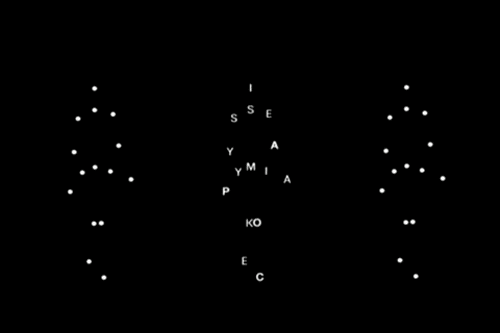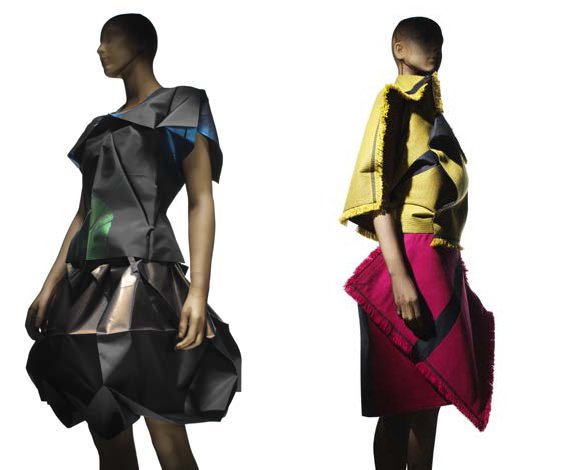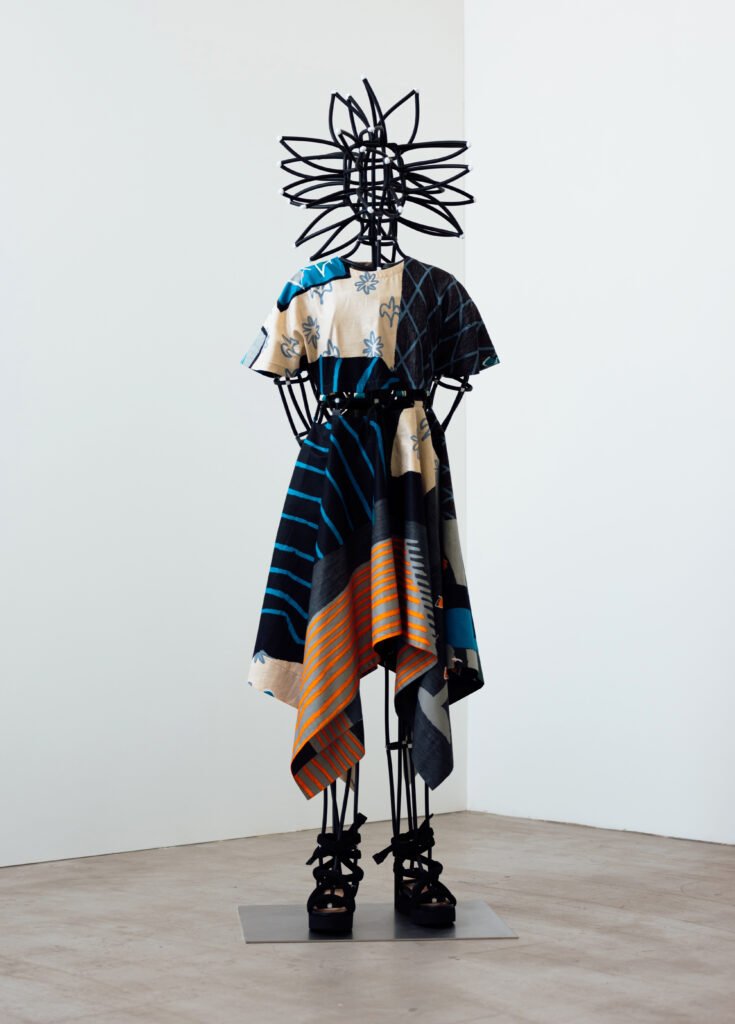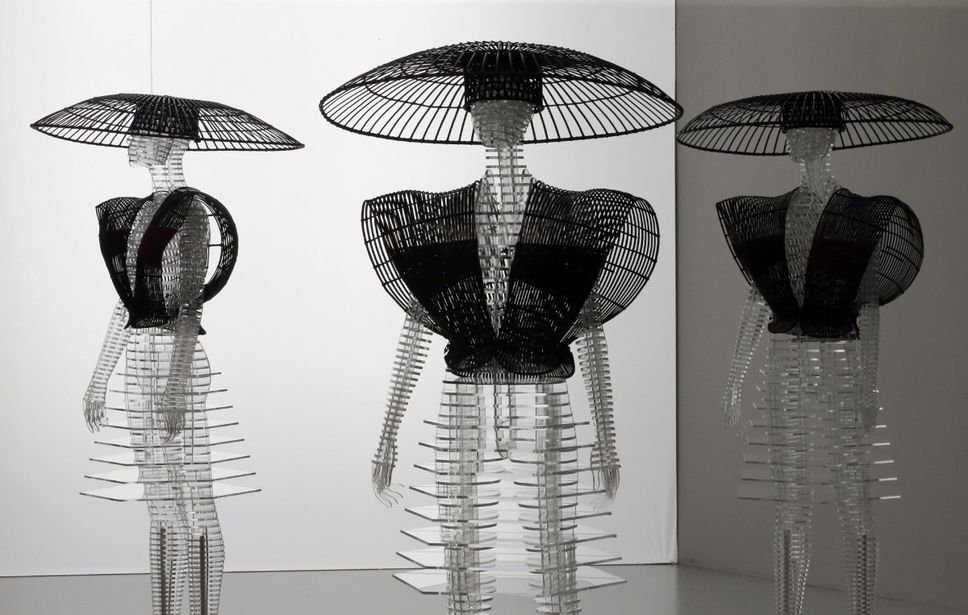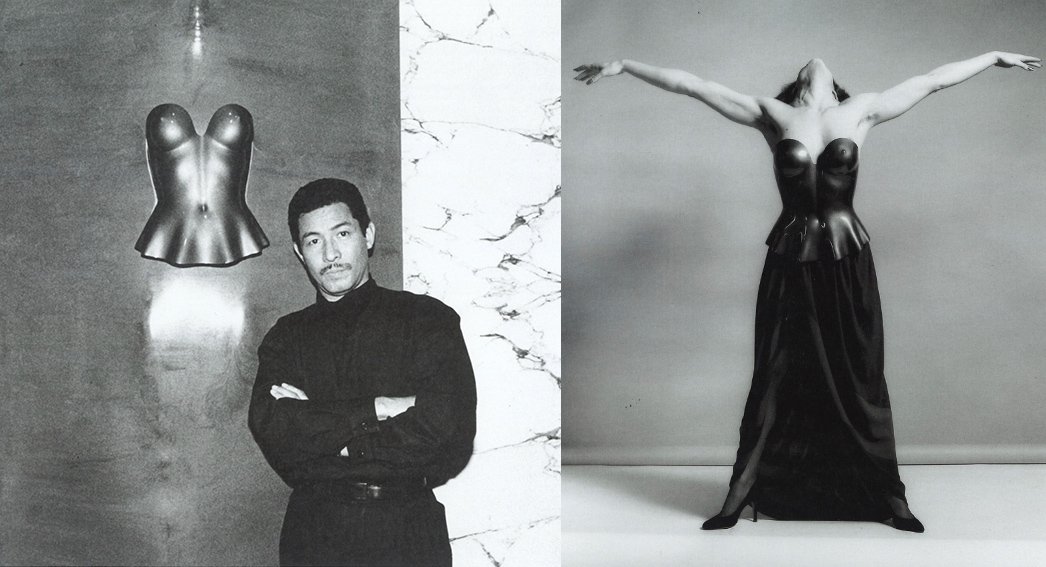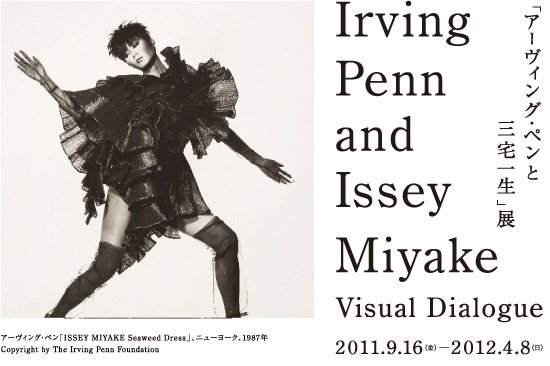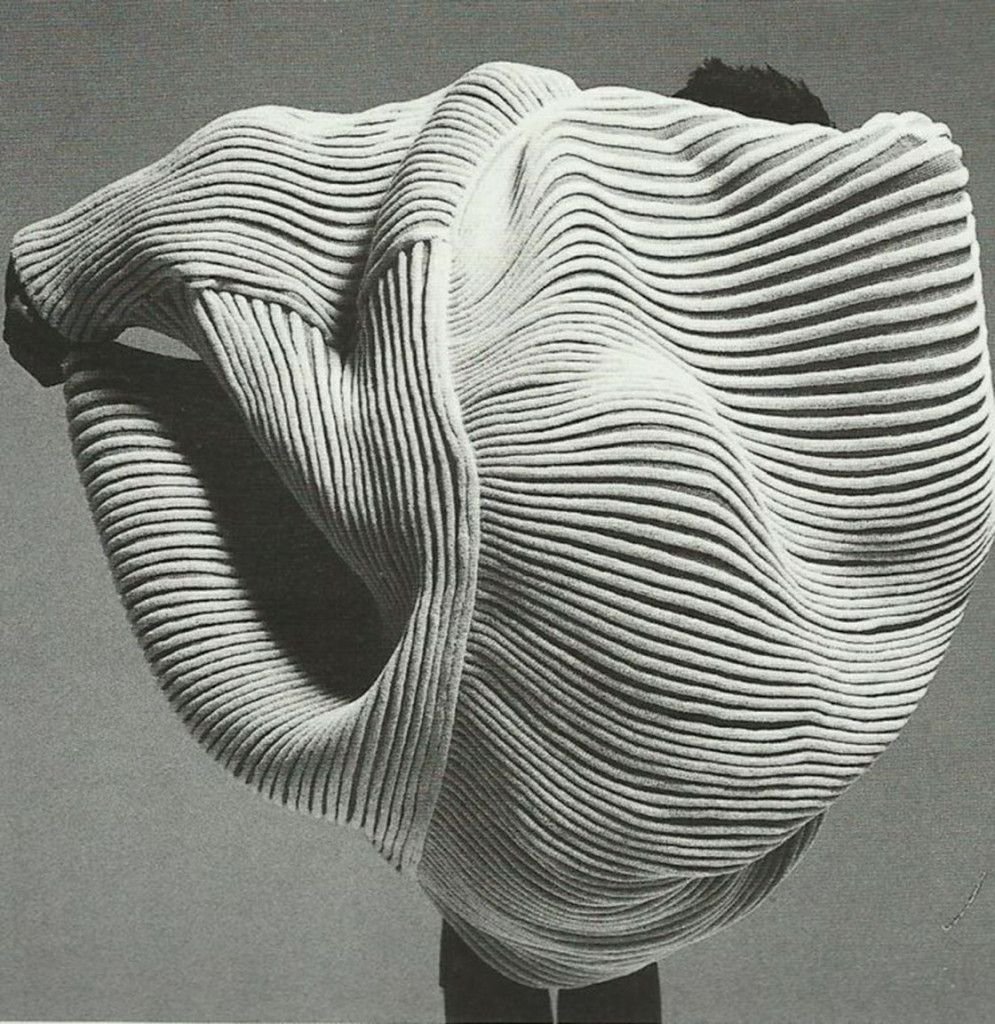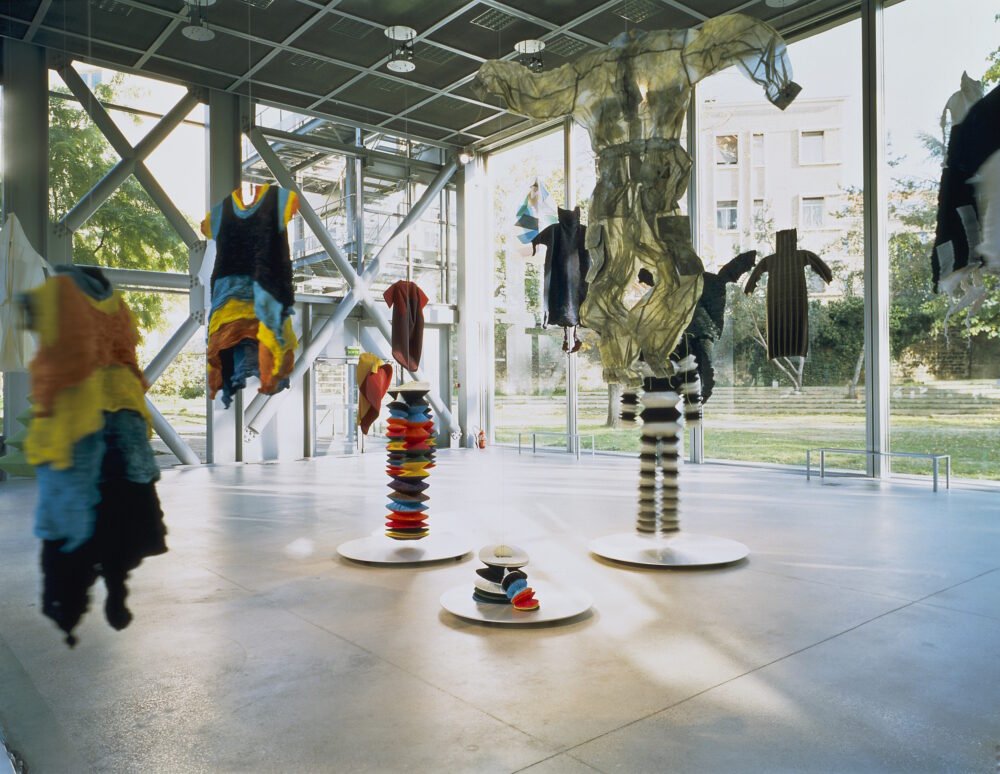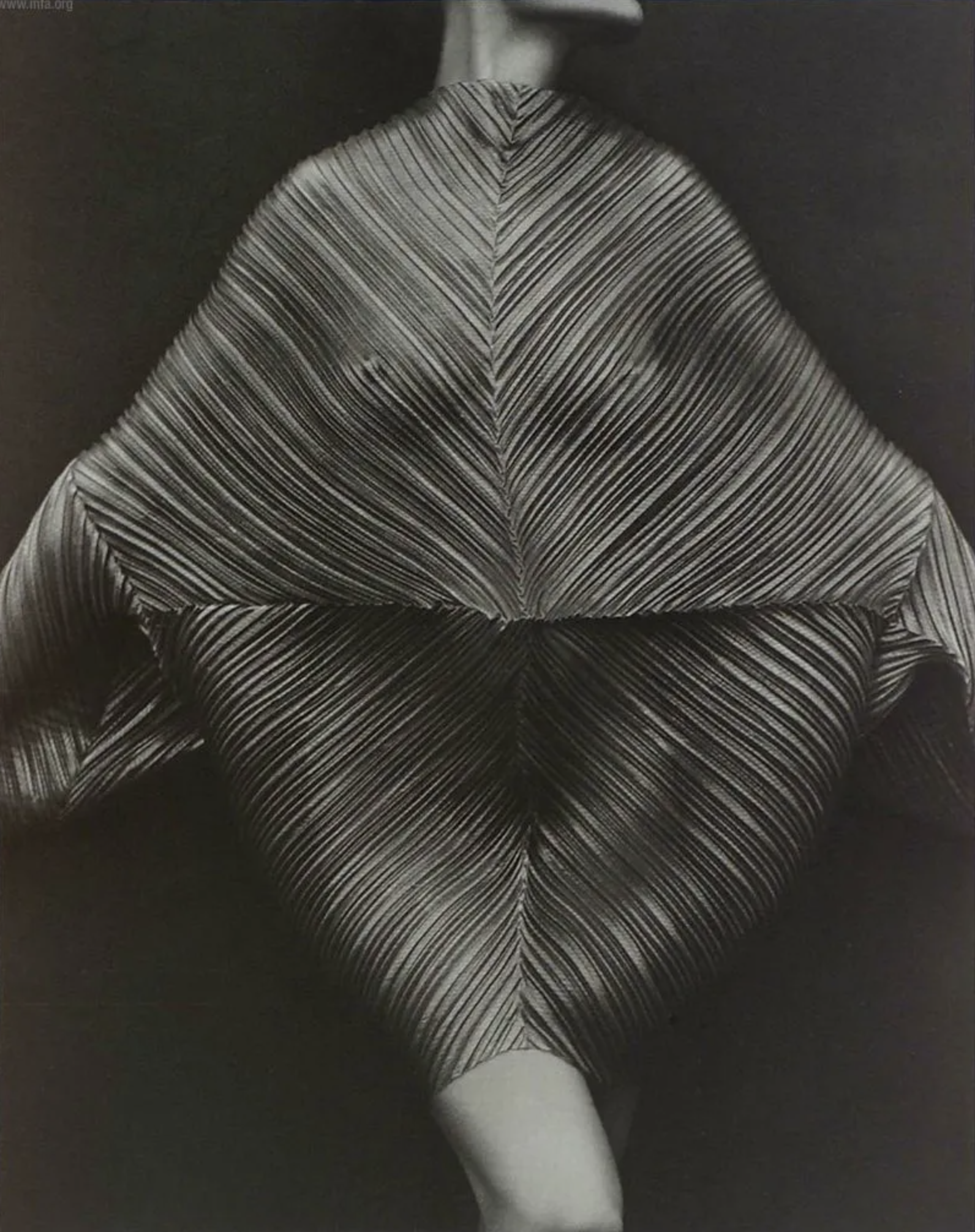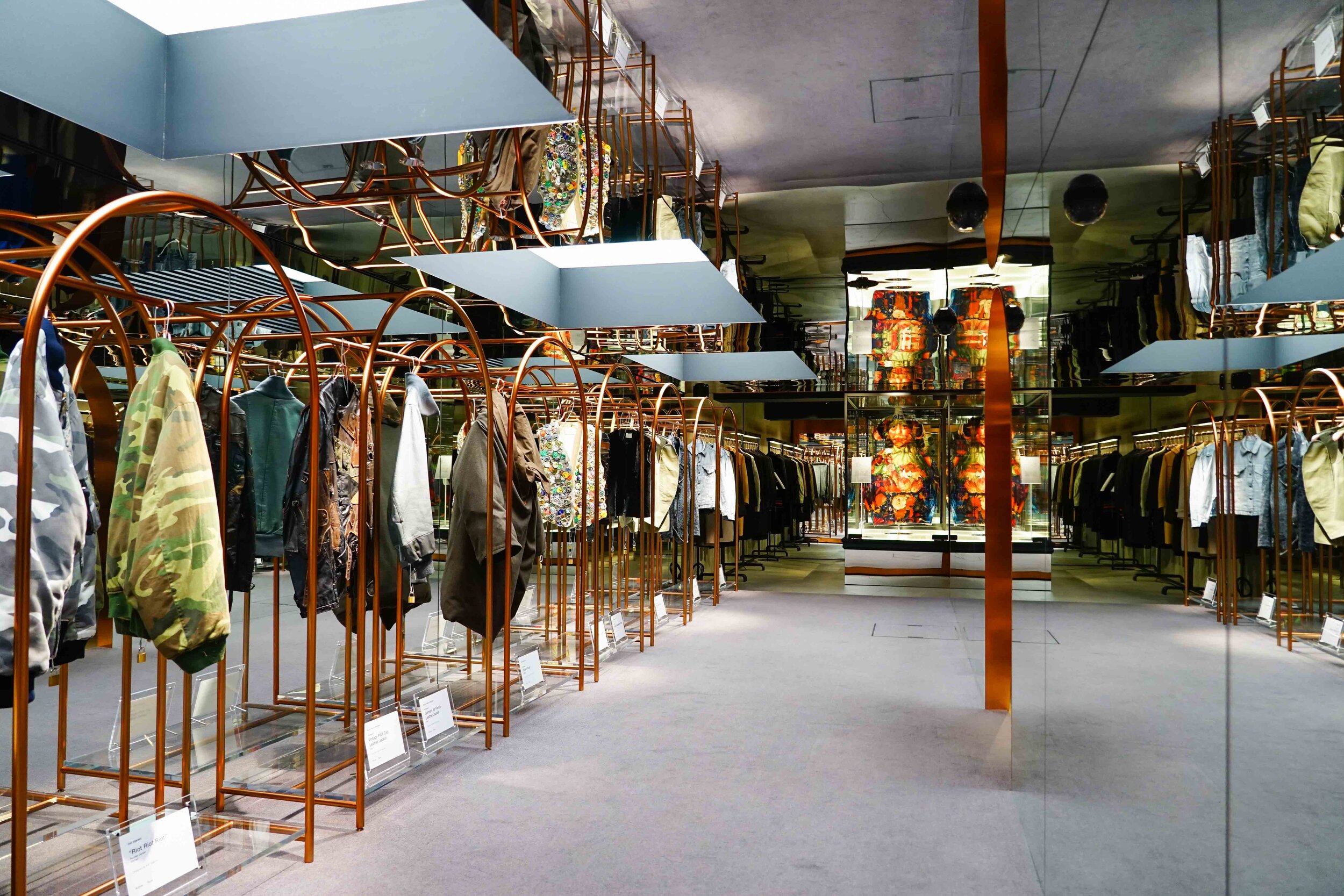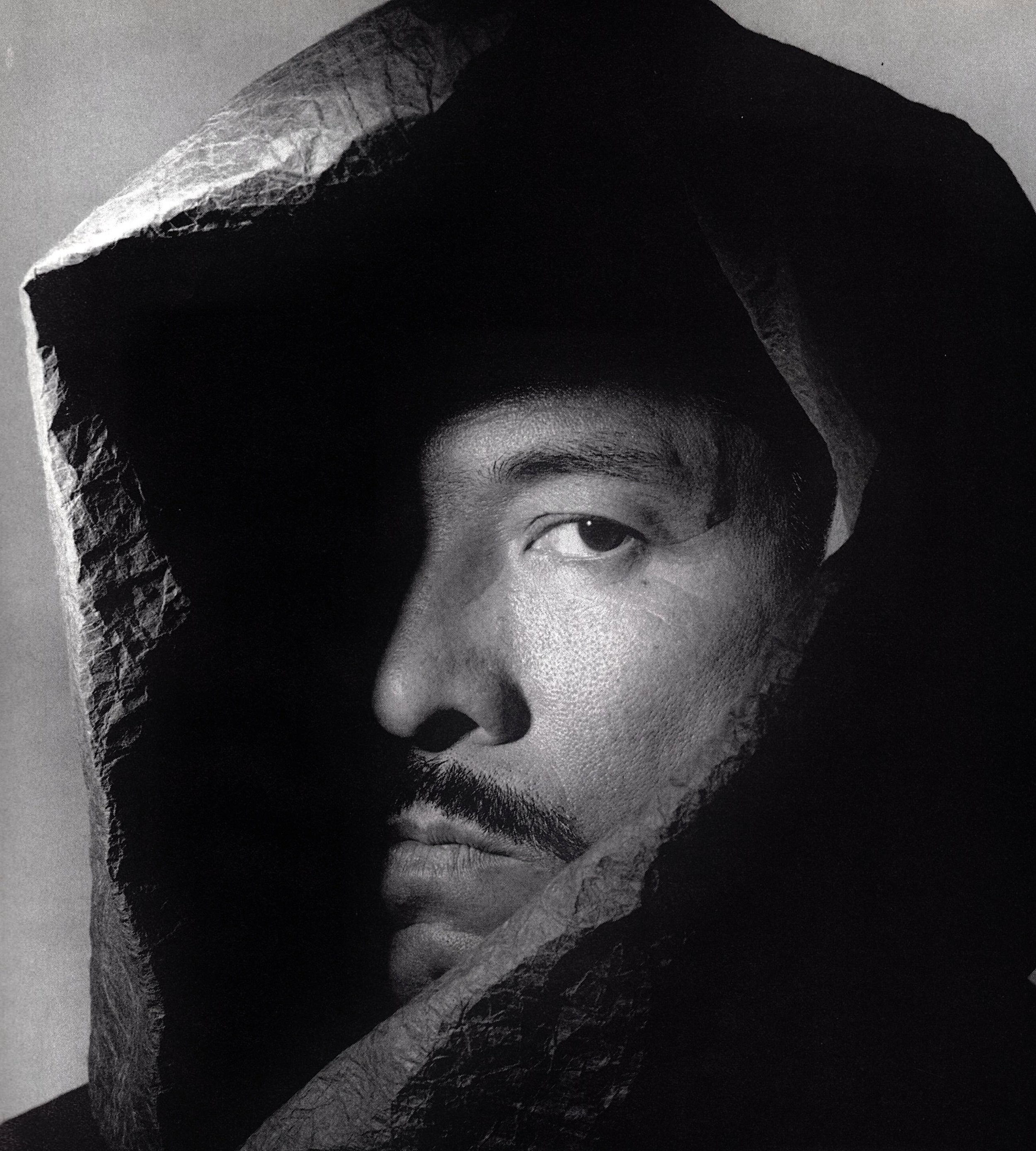Issey Miyake – A Lifelong Journey of Mastery

When speaking on the growing beast that is the fashion industry, today you need to have it all to become a huge success; new and bold ideas, a marketing strategy to fuel the hunger of the youth, a spark of luck, and a budget which allows you to place yourself in front of the right people. Unfortunately, with today’s trend-thirsty culture, it’s usually not about the next best thing, but the next big thing. Although before this, there was a time where new, conceptual, and imaginative ideas were at the forefront of this bull ride to the top. Where a designer that would push the boundaries and show others how it could be done was awarded the recognition they deserved. There is no better example of this than the legendary and historical individual that calls himself Issey Miyake.
Issey Miyake, originally named Miyake Kazumaru, is a Japanese fashion designer who, amongst a few others, lead the contemporary and experimental movement of the avant-garde Japanese style that is so popular today. Born on April 22, 1938, in Hiroshima, Japan, Miyake was just 7 years old when he survived the Hiroshima bombing; unfortunately, his mother didn’t share the same fate as he would. This would be his very first wave of inspiration and desire to create. Seeing two bridges in the epicenter of the attack, now named Create and Go, these bridges would allow Miyake to know that design can invoke emotion: hope, freedom, and creation in destruction.
Issey Miyake is now world-renowned and a household name, sharing the same weight behind his status among some of the greatest designers in the world. He pushed the boundaries and challenged convention, creating an east meets west story through his garments which would propel him to be a mastermind of the craft. Miyake’s empire now includes over 300 stores worldwide, 8 clothing lines, as well as a line of fragrances for both men and women. A true kingpin of evolution, both from a structural and aesthetical point of view, it would not be a leap to assume that Issey Miyake is one of the most influential and successful designers of our time.
HISTORY IN THE MAKING
Originally studying graphic design at the Tama Art University in Tokyo, he would graduate in 1965 before moving to Paris, just three months before Kenzo Takada [the first Japanese designer to be successful in Paris]. Kenzo and Miyake actually knew each other in Japan, and both studied together at a tailoring and dressmaking school, l'Ecole de la Chambre Syndicale de la couture. Already designing clothing at this point, Miyake would go on to start his career as an apprentice for French couturier Guy Laroche, and two years later he apprenticed at Givenchy before moving to New York in 1969. It’s hard to believe that Miyake could of one day been making more suave and sophisticated women’s dresses, instead of his now futuristic and experimental industrial creations [including a chair in which doubled as a piece of clothing]. Alas, Miyake had experienced the French riots during his time in Paris which pushed him away from his want to create drapes for ladies who powder their noses and drink fine wine at lunch and instead pushed him to want to create more universally worn pieces. Because of this, it was time to move on to the big apple.
His time in New York was only a short snippet in his career though, as whilst working for a ready-to-wear brand in New York he started to become more interesting in the evolution and development that was happening back in Japan. Just a year later Miyake would venture back to Japan and start to establish himself as a giant, or should we say kaiju, in the fashion industry. He then set up his first studio, the Miyake Design Studio. Just a year later, Miyake would showcase his first collection in New York, mainly t-shirts consisting of Japanese traditional Tattoo designs. 3 years later, Miyake would quickly be recognized as a maestro of the craft. In 1973 he would be invited to Paris with multiple other young and upcoming designers and would move on to set up a boutique there and continue to show his work from that point on in Paris.
MASTER OF MASTERS
As of the 1980s, Issey Miyake was already a well-established and congratulated figure in fashion, and this would only be further enforced with the uprising of two other world-renowned designers that followed in Miyake’s footsteps. Miyake laid the foundations for the avant-garde Japanese style which we all know and love [and most likely can’t afford], but this was further enhanced with Rei Kawakubo, working under the label Comme des Garçons, and Yohji Yamamoto. These two would go on to showcase their work in Paris alongside Miyake in 1981. Although it was never their intention, these 3, with Miyake being the head of the Cerberus of Fashion, would lead a trend of future Japanese avant-garde stylists, creatives, and artists.
Kawakubo said in an interview with Olivier Séguret in Madame Air France, "We certainly have no desire to create a fashion threesome, but each of us has a strong urge to design new, individual clothes which are recognizably ours"
Miyake challenged the convention of western clothing for females at the time. The western trend usually being tight, exposed and hugging of a women’s figure, Miyake instead focuses on simplicity, minimalism, and flowing forms. It was a conscious decision to make it almost go the opposite direction to the westernized ideologies, and Miyake even mentions that this approach was one of his greatest advantages.
"I realized that my very disadvantage, lack of western heritage, would also be my advantage. I was free of Western tradition or convention … The lack of western tradition was the very thing I needed to create contemporary and universal fashion. "
To go against the western methodologies and ideologies was Miyake’s way of breaking the mould, and not only standing out but standing up against normalities and expectancies. He was not focused on creating traditional clothing, yet instead focuses on creating universal clothing which resonated with both genders and cultures.
BEAUTY IN DESIGN
Throughout his career, as he would continue to hone in on his niche, Miyake’s main concept and muse have never truly differed all too much. He has always been interested and inquisitive about the way clothing and fabrics move and flow with the body. He broke the convention of the usual East meets West approach and focused heavily on how the fabric had a relationship with our bodies, and how he could further relish and embody the two together to create something truly unique and beautiful.
Already being congratulated as an avant-garde experimentalist, it is not just the look of the garments that Miyake manages to pull off so well. His approach and take on form, one that blends both art and function, blurs the lines of contemporary artistry together with an almost ominous but sexy tone. Using bizarre shapes and structures to create unique and outlandish shapes, yet still, have a subtle and understated feel to them.
A signature approach of his that would challenge one’s perception of fashion was ‘A-POC’, or ‘A Piece of Cloth” this idea was supplied in a single tube of fabric, which was made from a single thread with the aid of an industrial knitting or weaving machine programmed by a computer. This concept originated as early as 1976 and has been the foundation of Miyake’s work as It continued to evolve and innovate in its different ways respectively. This would come to its final form between the time of 1997 and 2001, where Miyake worked and collaborated alongside Dai Fujiwara showcasing a radical attempt to do away with cutting and sewing. Production was based on feeding thread into a computer-programmed machine that would then generate a complete garment. The garment would then have perforations and places to cut to create an almost one size fits all piece. Sustainability and waste are always at the forefront of Miyake’s creations, and this A-POC method was to ensure that we could get the most out of our resources without wastage.
THE OBSESSION WITH FABRICS
Issey Miyake was also inspired and obsessed with the use of different types of fabrics and materials. Alongside his A-POC method, Miyake would further explore different catalysts for his fusion of modernism and experimentalism with things such as plastic, paper, and wire. He called his creations from this period “Body Works.” The American art magazine Artforum featured a Rattan- vine Body created by Miyake on its February 1982 cover—the first time clothing had been featured on the cover of an art magazine.
From early days Miyake knew that he wanted to create ‘things’ rather than fashion. This has been an ethos that he carried through his entire career, and it shows from his extensive research into different textile and technological methods used in his garments. Instead of collaborating with a high-selling streetwear designer that all the cool kids are buying into, instead, he focused on working with different craftsmen to develop and sharpen his capabilities with textiles.
“I didn’t know how to create work at a higher level than what I was seeing. After coming back to Japan, I collaborated with textile designers, and people who were capable of cutting clothes and using great technology. I am not the kind of person who can do everything. When we are working in this kind of environment and industry we need to accept the knowledge of others. Today, some of my team have been working with me for more than 40 or 50 years.”
They say to hire people that are better at your job than you are in order to succeed, and Issey Miyake does not shy away from that statement. By collaborating with masters of textiles and fabrics, he then has the flexibility and time to work alongside them to further develop his brand to what it is today. The maestro has always been extremely interested in synthetics and recyclable products, making long-lasting garments that have a price point that can warrant the lifespan of the product. Many of his work is all machine washable, which is not the usual case with many high-end fashion labels that use luxurious materials for their garments.
Miyake has always been a fan and a pioneer of textiles used in modern fashion today, and this has trickled down to the mass market. Fun fact, Miyake once told the creative director of Uniqlo that he was a fan of the brand’s thermal underwear, and to his surprise, the material used was in fact a textile Miyake himself had helped engineer 30 years before.
MORE PLEATS, PLEATS
Leading on from textiles, this brings Miyake‘s journey up to arguably his most successful and recognisable collection, Pleats Please. Now the protagonist of Miyake‘s career, Pleats Please is the culmination of years of experimentation with textiles, technology, art, and form. An effortlessly beautiful statement of how fabric can function with the shape of the body, this range uses a single piece of high quality, 100% polyester, permanently pleated fabric which is folded via a specific process. Working alongside his textile director, Makiko Minagawa, together with the textile mills they brought to the market still to this day one of the most recognisable lines of clothing from a designer.
Traditionally, pleats are permanently pressed before a garment is cut, but although a lover of traditions and heritage, Miyake again challenges this to create a new method entirely. They would assemble a garment two-and-a-half to three times its proper size, then would fold, iron, and oversee the material so that the straight lines remained in place. The garment would then be placed in a press between two sheets of paper, from which it emerged with permanent pleats. The result was a garment that almost resembles origami in its nature. Effortlessly maintaining shape regardless of how it flowed with the body.
A stylish, sexy, sophisticated, and outlandish line that allowed you to be in the office or a wedding in the day and hit the town and clubs at night without the need to change. This blend of contemporary and avant-garde styling, made to look so effortless that anyone could pull it off made it so that Miyake had, in many people’s eyes, accomplished his goal; he had created a universal loving line of clothing which could be worn by everyone, looked good on everyone, and regardless of your style could be worn with pride. Years of experimenting, tweaking, crafting, and innovating had led him to his Pleats Please range, and still to this day people have tried to mimic this method, but no one has come to close to the mastery of it as Issey Miyake has.
A Lifetime Showcase of Craftmanship
Not only did the master of pleats make waves within the fashion industry, but he also has a lifetime supply of awards and recognitions from many art institutions. In 2005 the Japan Arts Association awarded Miyake a Praemium Imperiale for outstanding achievement in the arts. Also, recognised mainly for his work on ‘A-POC’ and Pleats Please, in 2006 he became the first fashion designer to receive the Kyoto Prize in Arts and Philosophy for lifetime achievement, awarded by the Inamori Foundation in Japan.
Miyake has over 20 awards to his name throughout his life, including awards that for the first time were awarded to a fashion designer such as his first-ever award, the Mainichi Design Award, Japan. He has been awarded the best collection from a foreign Designer in Paris [1985], The 1st Hiroshima Art Prize by the city of Hiroshima [1990], selected as a Person of Cultural Merit from Japan [1998], awarded “Designs of the Year Fashion Award 2012” by Design Museum, London [2012], and the list goes on and on.
Issey Miyake has helped to blend what today seems very obvious, art and fashion. He has opened the doors to other avant-garde designers to blur the lines of wearable art and truly has captured the essence of what many designers struggle to do today. Fashion is about showing emotion, showing individuality, and showing character through a greater means than just words. Miyake interprets this perfectly with artistry and craftsmanship.
Game Recognises Game
They say that greatness rubs off on one another, and this may be true of Steve Jobs and Issey Miyake. Everyone who knows much about Steve Jobs knows the joke behind his ‘uniform’ consisting of a black turtleneck, blue jeans, and some ‘Dad’ shoes. But did you know these turtlenecks were actually crafted by Issey Miyake?
At the time it was said that Jobs was inspired by previous Sony Chairman Akio Morita, who provided his employees with uniforms made by Miyake. Those uniforms helped create a bond among employees, and Jobs wanted that for Apple. Jobs would commission Miyake to make a vest for Apple employees, although it didn’t turn out as they hoped. Instead, Jobs created a uniform for himself, wanting to spend less time thinking about what he needed to wear every day. He wanted getting ready in the morning to be second nature, so he could spend more time thinking of his brilliant ideas. He asked Miyake for black turtlenecks for his wardrobe, and Miyake provided him with 100 black turtlenecks. “I have enough to last for the rest of my life.” Stated Jobs. Next time you’re reading one of the new Sabukaru posts on your flashy iPhone, thank Miyake for his contribution to the tech-giants success.
Look good, smell better
Miyake also further enhances his brand through the sense of smell. Somehow again adding in a unique blend of elegance but innovation which instead of seeing with your eyes, you smell with your nose.
Now a worldwide success, the Issey Miyake range of fragrances was a breath of fresh air [pun intended] in the world of perfumes that at the time filled with room rockers. A sweet, delicate, refreshing scent that fizzled on the nose but didn’t overpower your senses came to surprise the market and saw it sore in popularity as a fan favourite amongst women who preferred a more understated and sophisticated approach to smell.
Miyake states that his fragrances are not perfumes, yet instead are scents. Focused on the idea of water, his scents are made to elegantly dance around the room rather than fill and force their way through them. Very similar to his clothing, they are subtle, understated, yet uncompromisingly beautiful.
“I like the idea of scents but not that of a fragrance,’ Issey Miyake has mentioned. ‘I do not possess the culture of fragrance, but rather the culture of scents.”
Issey Miyake and Irving Penn
Although the list of collaborators though Miyake's life is extensive, one that sings out to us is the work with photographer Irvin Penn. A one-off project for Miyake's collection for Vogue in 1983 quickly expanded into a 13 year-long relationship between the two creatives which would blossom into an archival feature of mass proportion. Penn captured Miyake's collection in such a way that it was said to have allowed Miyake to see his own collection with fresh eyes; like he was seeing the same thing, but for the first time again. Miyake would then commission him to capture his next collection, and the next, and the next.
“I was looking for the one person who could look at my clothing, hear my voice, and answer me back through his own creation. I searched long for such a person and found in Penn-san”
The work created resulted in over 250 photographs over the course of 13 years, 7 books, and was shown off in an exhibition at Tokyo museum 21_21 Design Sight, entitled Irving Penn and Issey Miyake: Visual Dialogue. What made the two’s connection work so well was disconnection. This may seem strange, but it was this notion that made the two creatives work best with each other. Penn never once visited Miyakes fashion shows, and Miyake never once ever visited one of Penn's photography sessions. It was this disconnection and surprise that allowed the two to bounce off each other. They gained inspiration from one another due to the unknown and lack of need to direct one another’s vision.
Continuing to lay the Foundation
Having passed the reigns and retiring from the Paris fashion scene in 1999 to Naoki Takizawa, who had been designing Miyake's Plantation Line since 1983 and Issey Miyake Men since 1993, in 2004 Miyake created the Miyake Issey Foundation. An educational foundation to aid in the electing of next-generation creatives and thinking. A forward-thinking driven society which is inspired by Miyake's approach to both fashion, and life in general. To challenge, to tweak, to experiment, and to be inspired by the entire process.
The Issey Miyake Foundation is bent on giving back after all the knowledge gathered over the past 45 years of Miyake's life. To create new creative projects for the public, showcasing and nurturing talent. As well as this showcase, Issey Miyake also created an art Museum under the alias 21_21 Design Sight. A place that can explore new creative ideas of design at a time where there was a severe lack of places for this in Japan.
SPECIAL PLACE IN HISTORY
Curiosity and happiness are at the core of my work. Design is never static but it is only possible after constant exchanges of ideas, aesthetics, and sensibilities. Clothes are of no interest except insofar as they provoke sentiments and reactions in those who wear them. I create, not to express my ego or my personality, but rather to try and bring answers to those who are asking themselves questions about our era and how we should live in it.’
A quote from the master himself, and one that resonates with any creative on so many levels. There is something very humble and inspiring about someone who creates simply just to create. Someone who is not okay with accepting normality, but instead wants to create a new one entirely through the medium of something special. Issey Miyake is a man who does not fuel his ego through success, but instead does what he does out of enjoyment of changing the world into a more conceptual, experimental, and interesting place. His work is an echo of his morals, ethos, and passion.
We may never see a designer quite like Issey Miyake again in our lifetime. Someone who meticulously explores something so deep that it folds out into something completely new, much like his pleats he crafted ever so perfectly during his career. Someone who has inspired generations of forward-thinkers to stop, listen, learn, and craft, instead of joining the rocket ride to the moon of success through cheap labor, intrusive sales, and marketing tactics, and a lack of love for what you are doing. And for that, we would like to thank Miyake for making his mark on design.
Text By: Joe Goodwin is a brand consultant living in the UK, but explores subcultures through the medium of writing. With a particular interest in fashion and anime/manga, Joe hopes to set off to Tokyo as soon as he can to soak up the bright lights and culture.



